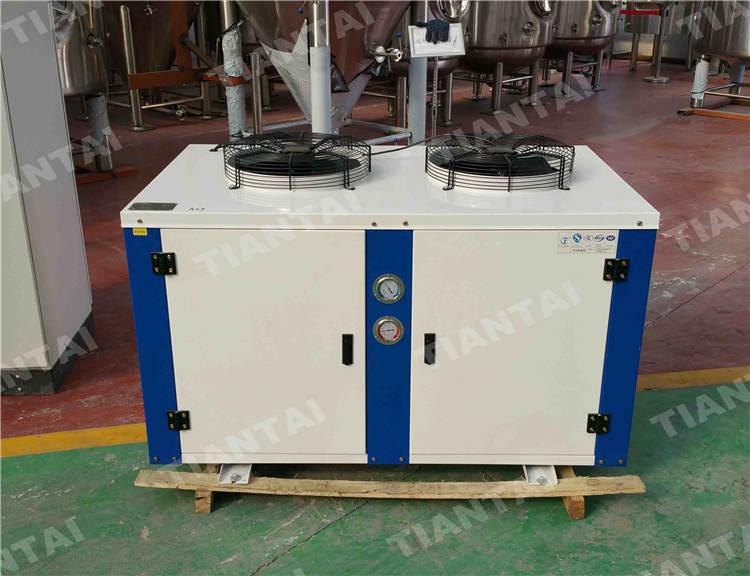The glycol system where is possible to use the copper line is the freon copper line. But is our very old model that we had stopping use since the 2014 year.
So I am here to try to explain the various chiller models, hoping it help to learn more about them if you are now planing with a brewery plant.
In this brewery area, three kinds of chillers will be mentioned: the first generation chiller, the second generation chiller, and the third generation chiller. The third generation chiller is widely used in USA by now which contains a very small glycol tank inside the chiller, so this is why you found that some USA breweries do not have a large glycol water tank. The question refers to the third generation chiller is another topic that we plan to discuss separately next time as it is also related to the wort. Here, this time, we mainly compare the differences between the first generation chiller and second generation chiller as they are adopted based on the similar basement, the only difference is the chiller. Ok, let’s begin:
Of course that the second generation chiller is definitely much better than the first generation chiller.
With the first generation chiller, the freon comes out from the chiller condenser via the copper piping to the glycol water tank to exchange heat with the glycol water, then come back.
With the second generation chiller, the freon is only circulated within the chiller itself, and it is the glycol water mixture that come out from the GWT to the chiller to be cooled by the freon.
1. We can see that the compressor in the first G chiller has to send the freon to much longer distance, which will affect the life time of the compressor.
2.The second chiller do not need chiller expert to weld/connect the copper line, but just easily connect the PVC/PPR piping, the installation is much easier. Besides, users do not need to prepare the copper line anymore.
3.For the first G chiller, when freon first flow into the GWT, the temperature is close to -30℃, the freeze point of glycol water mixture (30% percentage) is -15℃, so the copper line at lowest place has risk to get freezen that will effect the heat exchanging efficiency.
4.With the first chilling way, the glycol water mixture do not move in the glycol water tank, which also affect the heat exchanging efficiency. With the second chilling way, since the glycol water is circulated between the glycol water tank and the chiller by pump, the heat exchanging efficiency is higher.
Edited by Jana
Sales manager
brau@cnbrewery.com

An quick view of the first generation chiller and second generation chiller / Brewery Setup Blog / beer equipment for sale, chinese beer equipment manufacturer and suppliers, beer equipment price & cost
No comments:
Post a Comment